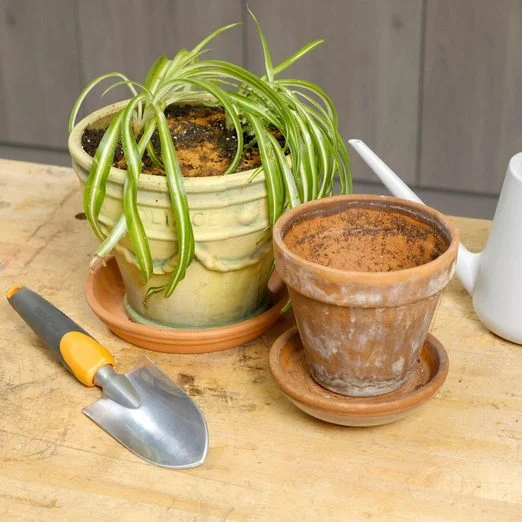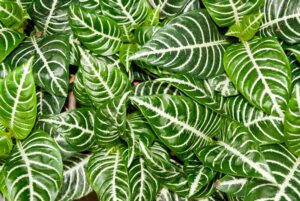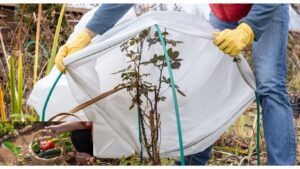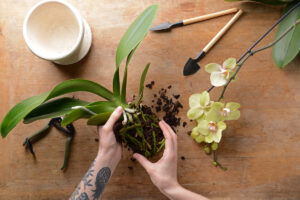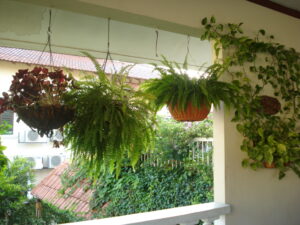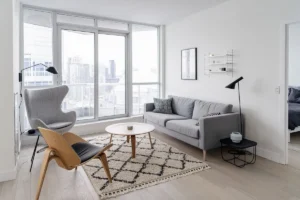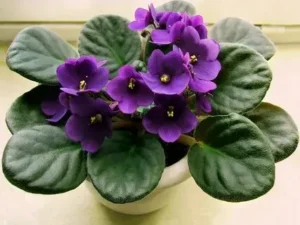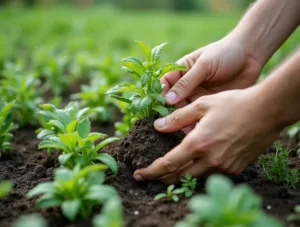Ignoring the need to know how to correctly repot a plant could cause problems, including stunted development or root rotting. Still, you need not panic; we will walk you through it.
On This Page
Introductions
Learn how to repot a plant like a professional to maximize its potential, from choosing the new container to guaranteeing good development.
Tools needed; materials The following items are required: cinnamon powder, landscape fabric, and the preferred plant.
Small pebbles in potting soil
Repotting a plant involves more than just placing it in a pot. Not every plant fits in one pot. Not every pot fits every plant. Plastic, teracotta, cement, ceramic, or wood? Many factors to take under account.
The soil and pot you choose will determine how well a growing plant thrives. The number of times I find a buddy with a potted plant dying just because their pot does not have a drainage hole, the roots are decaying, and their watering schedule is off astounds me.
A plant will tell you its needs. You simply have to watch it. When the leaves and stems completely fall off and roots emerge from the ground through drainage holes, it’s time to repot the plant. You probably have a fantastic soil mix for your plant. But I also have to show how to choose the right pot for the plant and how to design drainage in any container without a hole.
Before you repot, research the plants you will pot, as well as their preferred moisture, light, and pH balance. Then, based on meter data, change the soil acidity, water schedule, and light exposure. A few days before you intend to repot the plant, give it a decent watering. This will release the roots from the old pot’s walls and enable the plant to have a softer changeover.
Choose a potting vessel.
Terracotta pots breathe with the plant and absorb moisture; as a result, they are always a great home for them. If the pot you choose is metal, plastic, or ceramic-glazed, though, make sure it features a hole at the bottom for appropriate drainage.
If your pot does not have a hole, you can easily drill one to allow for proper water drainage and prevent the development of fungus and disease from root rotting. Choose a drill bit that is appropriate for the contents of your pot. Masonery bit for terracotta or ceramic. Bit for metal, metal. Glass, bit for bit. Consider substituting a wood bit or acrylic for plastic or resin. Should you be required to drill a hole in your pot?

Look for and mark the center point of your pot’s bottom. Especially in glass or porcelain, place some strips of painter’s tape where you want to drill to prevent chipping or cracking.
Turn the bottom upside down and drill down from there. Either way, make sure you have a sacrificial piece of wood supporting the area you will drill through to prevent the drill from blowing out the material and causing further pot damage.
Add water to cool the bit and stop the material powder from going airborne when drilling through glass, ceramics, terracotta, or plaster. If you are drilling through metal, a few drops of oil will also lubricate the bit and substance.
Start with the landscape cloth.

To prevent dirt and pebbles from leaking out of the bottom when you water, cover the drainage hole with a thin piece of landscape fabric.
Place the drainage layer on top.

Pile one to two inches of tiny pebbles on the landscape fabric. This will facilitate the drainage of water from the roots, thereby avoiding their saturation or submersion in water.
Fill with potting soil.

Fill the pot about three-fourths full of potting soil, leaving room for your plant.
Take a plant from a used pot.
Pull the plant gently out of its old pot. Shaking the compacted dirt around the roots will help them to be free and enable easy growth into their new ground. Along the outside of the root ball, feel free to clip portions of the roots back. Steer clear of getting too close to the middle. Unbelievably, chopping away portions of the roots will encourage development. This will also simplify fitting the plant into its new pot.
Put it in a pot.

In your new pot of soil, create a center depression in the dirt to give the plant and its roots room. The root ball should be approximately one inch below the surface of the soil line. Carefully compress the potting soil around the roots, taking care not to crush them.
Water following repotting

At the initial watering, water the plant liberally to ensure complete earth saturation. A good watering will release air pockets, level the ground, and give your roots a running start to grow in their new habitat.
Advice on re-potting a plant
For the first several days, keep the freshly repotted plant out of direct sunlight. The plant will thrive better in filtered or indirect light, even if it enjoys sun exposure; it takes a few days to acclimate to its new environment.
To ward against fungal and plant diseases and discourage insects, liberally sprinkle cinnamon on the top layer of the soil. Cinnamon is one chemical-free approach to ensuring your plants thrive.
You might choose to add more dirt once a few waterings pass. Watering plants expel air from the dirt layers, which compacts them and lowers the dirt level. Add roughly one inch to the top of the soil line, adding enough dirt to totally cover the root ball.
Questions and Answers
How often should I water my plants?
Every plant responds differently when you water it. Your plant’s pot and the amount of light it receives will also influence how water evaporates and the amount of water it needs to thrive. Furthermore, the frequency of watering varies depending on the season.
Water plenty while planting or transplanting to give the roots time to settle in. Generally, you need to water plants every five to seven days. Pay special attention to the recommended plant watering calendar. If your plant is unhappy, it will send signals—dropped leaves, brown or black blotches, and dried-out leaves are all signs that your plant wants attention.
When should I change my plant’s pot?
Plants grow endlessly. Growing plants produce larger, deeper roots in a pot. It could be time to give your plant more space when the root ball starts to show from the top of the dirt line. Examining just below the earth level and along the outside edge of the pot will also help you determine whether your plant prefers a larger pot.
If you feel the roots have filled the pot completely, you should replace it. Through the drain holes, roots can grow from the pot bottom. If your plant is top-heavy, leans over, and overwhelms the pot, you must repotte it.
Do grow lights make sense?
Indeed, indoor plants benefit greatly from grow lights. Grow lights come in many varieties. Certain grow lights feature timers that let you control the number of hours of light your plants get. Other grow lights allow you to choose between red lights, blue lights, or both, which encourage flowering and development. Seeing plants bloom beneath a grow light when inches of snow are outside your window is nothing better.
